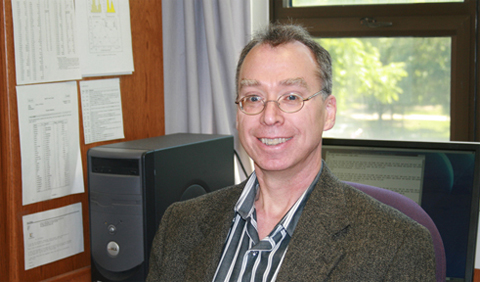Dr. Kenneth Hicks, Professor of Physics & Astronomy at Ohio University, authored a column in the Columbus Dispatch headlined “Neutrino experiment sheds light on black holes, birth of galaxies.”
Neutrinos are, in a way, like X-rays in that they can pass through materials easily. On average, most neutrinos can pass through Earth without being stopped. The problem is how to detect the neutrinos. If a neutrino doesn’t interact much with matter, how do you build a device that “sees” the neutrino, much like an X-ray screen is used to “see” the X-rays?
This problem has been solved, but it’s not easy or cheap. The trick is that, every once in a great while, neutrinos do get stopped in matter and give off a bit of light. So devices built out of very pure water and kept underground in ultra-dark chambers with sensitive light detectors will catch a few neutrinos from the sun each day.
This may seem like a lot of work for almost nothing gained, but as it turns out, the neutrinos tell us a lot about things we can’t see with ordinary light, such as what’s going on in the interior of the sun. Neutrinos also can tell us about far-off objects in the night sky, such as how black holes feed on surrounding matter.
Read Hick’s column in the Dispatch. about how neutrinos are leading researchers to a super-massive black hole “oriented so that the axis of the spinning black hole is pointed almost perfectly toward us.”

















Comments